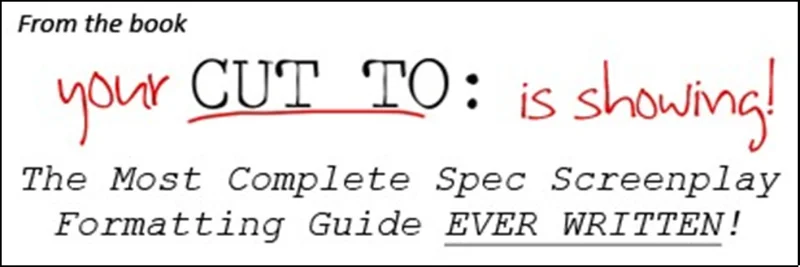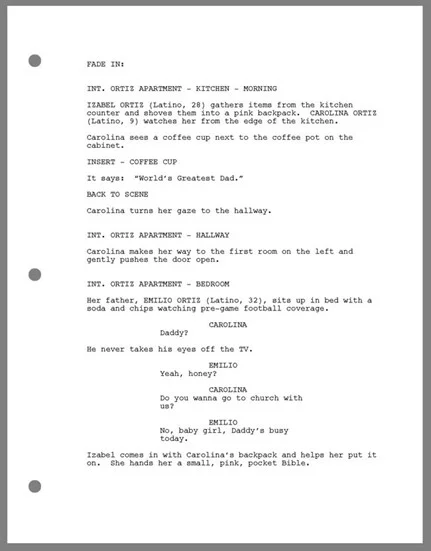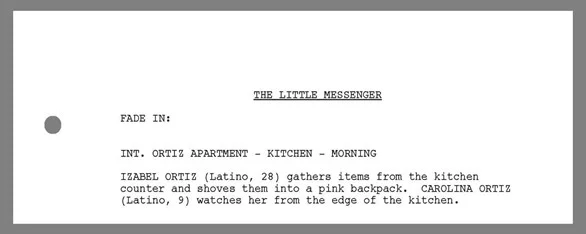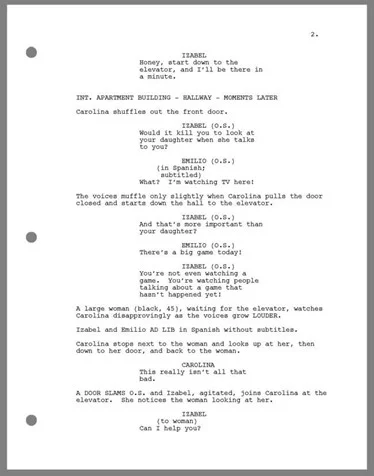
Screenwriting ABCs Script Formatting
Chapter 2 - Basic Screenplay page layout
by T. J. Alex
Screenwriting Lesson, 3 pages
Viewed by: 21 Residents and 116 Guests

The Screenplay Pages
Let's look at the subtle differences between the pages themselves. Below you will see examples of the first, second, and last pages of a screenplay.
Page 1 (How It Begins):
Below is an example of Page 1 of a screenplay.

Every screenplay begins with FADE IN:, in ALL CAPS followed by a colon. Okay, we are just getting started and I've already lied to you.
A few formatting experts believe it is fine to start out with the title of your screenplay. But most say that the title doesn't belong on the first page, citing the Title Page already gives the screenplay's title.
Personally, I agree that the title shouldn't be on Page 1, but if you include it, it should be CENTERED, UNDERLINED and in ALL CAPS, like this:

Also, you may want a quote or some text to precede the FADE IN:, in which case FADE IN: may not be the first text on Page 1.
Page 2 (and Beyond):
Below is Page 2 of the same script.
The primary difference between Page 1 and Page 2 (and all the other pages, for that matter) is the inclusion of the PAGE NUMBER.
Page numbers are right-justified and about 1/2" down from the top.

Last Page (How It Ends):
Finally, check out the Last Page example below.
Formatting experts disagree on EXACTLY how a screenplay should end. Some say it ends with FADE OUT. Others say it ends with THE END . Still many others say BOTH are required.
Personally, as in the example, I like to see both.
As you can see in my example, FADE OUT. is treated as a common transition, on the right of the page and in ALL CAPS, except followed by a period (most transitions end in a colon).
THE END is also in ALL CAPS, but CENTERED and UNDERLINED. Try to skip about five lines after FADE OUT. if space allows. If not, at least double space.

Other Items of Note: There are some other things you may notice going on within these three pages, such as Scene Headers, Direction, Character Headings, Dialogue, Parentheticals, Inserts, Foreign Languages, Sound Effect Cues, and more! Throughout this book you'll find definitions, explanations, and proper usage and formatting of all these screenplay elements and techniques.
------------------------
For more screenplay formatting rules and advice, check out the book, Your CUT TO: Is Showing! by T. J. Alex or visit www.scripttoolbox.com. From there, please like the page on Facebook, and share it with your friends.
If you have any formatting questions, please email T. J. at tj@tjalex.com.




